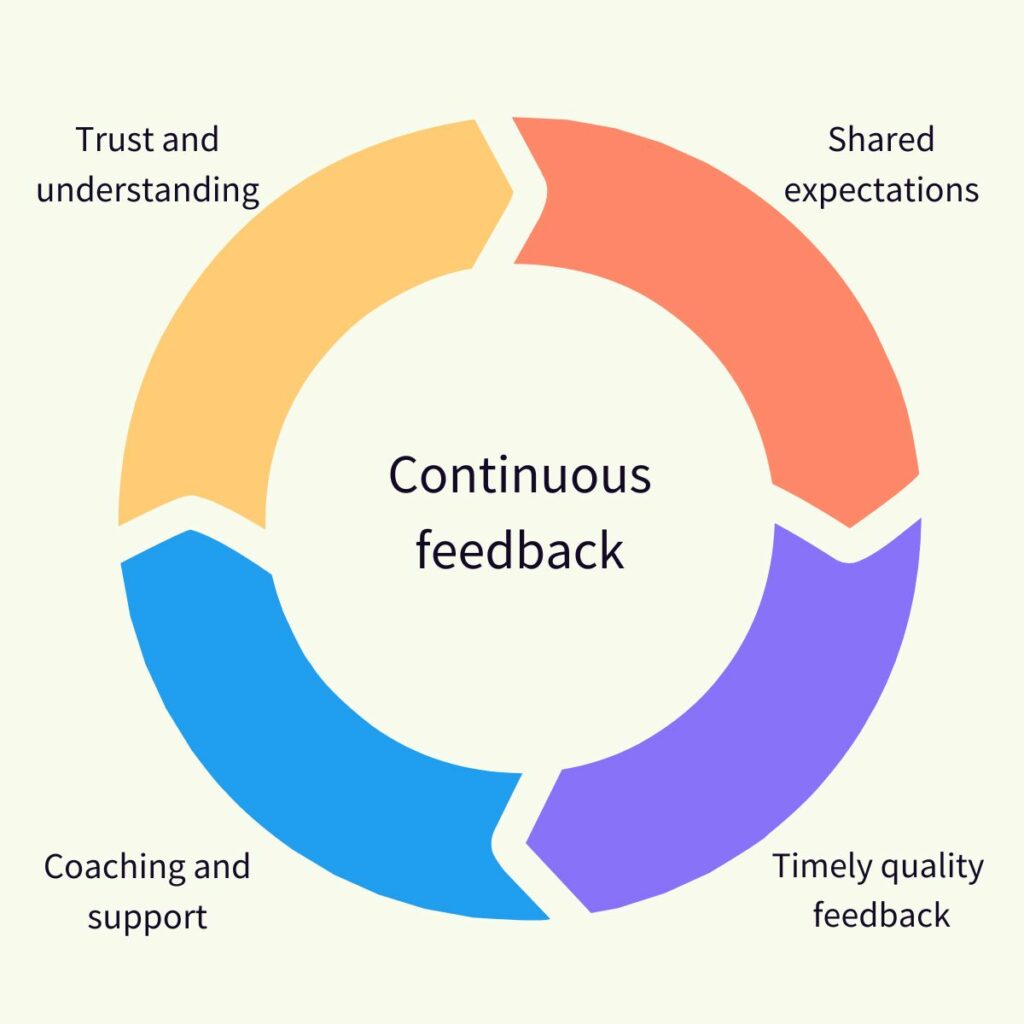The power of continuous feedback
This is a type of coaching and performance management that sets individuals up to succeed because they can understand and act on strengths and improvement areas in a timely way.
This practice also means that improvement areas can be addressed before they turn into overwhelming personnel issues and strengths can be tapped to achieve higher performance.
The traditional model of delivering performance feedback 1-2 times per year can lead to bias (e.g. recency bias), disengaged employees, and robbing individuals of development opportunities throughout the year.
The advantages are clear. (If you’re still not convinced read more below – Reasons to invest in continuous feedback). Let’s talk about how to adopt continuous feedback on your team.

Get continuous feedback
- As with any type of feedback, continuous feedback requires a foundation of trust and understanding between team members. The simplest way to build trust and understanding is taking time to connect and learn. The good news is that continuous feedback reinforces trust and understanding.
- You need shared expectations in place. Expectations can take the form of a specific goal, company values, job description, or growth framework. In other words – an explicit definition of what success looks like. It’s also important that both of you understand and commit to those expectations. Conflict and contentious feedback situations can arise when there aren’t clear expectations in place. Feedback can be perceived as arbitrary or judgmental. Once expectations are clear, feedback becomes a tool to achieve how you’ve both defined success.
- Now it’s time to share feedback. Use best practice frameworks to deliver high quality feedback. Take notes so that you don’t forget to celebrate or offer improvements. Prepare feedback for your 1:1s and carve out time to share 2-way feedback. Agree on when you can share feedback asynchronously. When you share in person, always follow up in writing so you both have a clear record. Invite feedback from team members.
- Treat feedback as a starting point. Once you give feedback, provide coaching and support. Set a time to measure progress for improvement areas. Recognize achievements publicly! If you’re the recipient of feedback, take time to digest the feedback and follow-up.
Reasons to invest in continuous feedback
Give your top performers what they want
- According to professional services firm PwC, nearly 60% of employees surveyed stated that they would like feedback on a daily or weekly basis. That number increased to 72% for employees who are under age 30
- 50% of high performers say they expect at least a monthly sit down with their manager (HBR)
- 70% Of a manager’s time is spent on low performers
Give your team development opportunities
- 80% or more of them would leave a company that doesn’t offer personal development opportunities
- LinkedIn research shows that 94% of employees said they would stay at a company longer if they had more learning opportunities
Show your appreciation before it’s too late
- 69% of employees would feel more productive if they were appreciated!
Get on top of performance issues faster
- 44% Of employees say low performers increase the burden on top performers
- 68% Of employees say low performers lower overall team morale
Make performance reviews easy
- On average, managers spend 17 hours per employee preparing for a performance review.” (compare that to the 30-60 seconds getting a Draft performance summary in Tandem)

